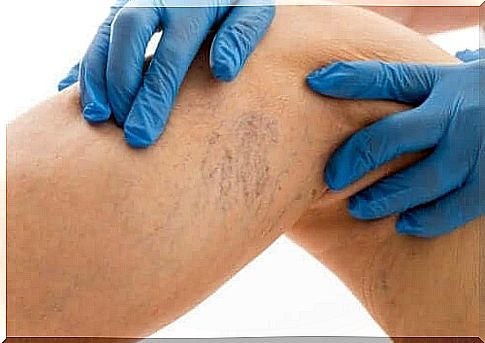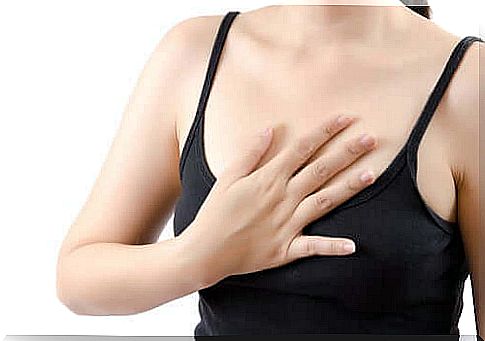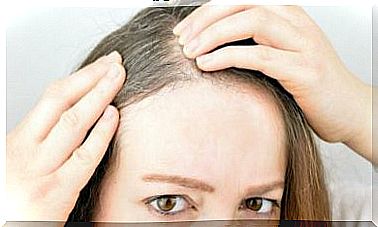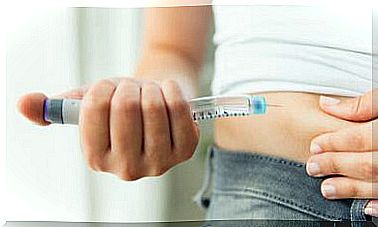The Virchow Triad: What Is It?
The medical term Virchow’s triad describes three factors that are important in connection with blood clotting and the formation of thrombi. In the worst possible case, venous thromboembolism occurs when these factors interact. Find out more about this topic today.

The Virchow triad relates to three factors that cause thrombosis or phlebothrombosis (deep vein thrombosis). The German pathologist Rudolf Virchow described this triad over 150 years ago.
In today’s article, you will learn more about these three factors and the health risks associated with phlebothrombosis.
Virchow triad: what is it?
The three factors of the Virchow triad that can result in deep vein thrombosis are:
- Changes in the speed of blood flow
- Hypercoagulability (changes in the composition of the blood)
- Endothelial damage (changes to the vessel wall)
Prothrombotic states favor this triad. When all three factors are met, platelets accumulate in the vessels and activate neutrophils at the same time. When combined, they form a blood clot that can cause thrombosis.
What is a prothrombotic condition?
Prothrombotic conditions are acquired or inherited situations in which the Virchow triad is likely. Changeable and non-changeable risk factors play an essential role.
For example, gene mutations can affect the blood clotting factors and trigger a prothrombotic state. It is a practically unchangeable situation because the risk factor is present from birth.
On the other hand, there are also systemic diseases that stimulate blood clotting. Examples are: cancer, high blood pressure, kidney disease and chronic venous disease. People with varicose veins or venous insufficiency are particularly at risk.
Furthermore, lifestyle habits are also decisive. Obese people or smokers, for example, are also at higher risk. When traveling long distances, it is important to stimulate the blood circulation in the legs again and again in order to prevent discomfort.
Women should be particularly careful with hormonal contraceptives that contain estrogens. The doctor should always assess the risk of thrombosis before prescribing these drugs. Furthermore, the uterus can press on the veins during pregnancy and make blood flow difficult. This could also favor the Virchow triad.
Other risk situations are:
- Chronic obstructive pulmonary disease
- Trauma in the lower limbs
- Prolonged immobility in the elderly (over 48 hours, for example due to hospitalization)

What is venous thromboembolism?
Venous thromboembolism (VTE) is one of the leading causes of death in hospitalized patients. A distinction is made between the following types:
- deep vein thrombus embolism (DVT) and
- Pulmonary Embolism (PE).
The blood clot can linger in the place where it forms, but it can also loosen and move on. When a blood clot travels to the lungs, it creates a pulmonary embolism, which can be life-threatening.
Thrombosis in the legs is the most common. The affected area turns red and is tender to pressure. The area is warm and can cause cramps and pain.
If a blood clot causes a pulmonary embolism, people have difficulty breathing, cardiovascular collapse or loss of consciousness, high blood pressure, and cyanosis (blue discoloration of the skin). It is a medical emergency that requires immediate treatment.
How do you diagnose problems with the Virchow triad?
The diagnosis can be made with the aid of Doppler sonography. This allows the doctor to see possible circulatory disorders due to clogged blood vessels. Computed tomography or magnetic resonance imaging may also be required in difficult or doubtful cases.
A pulmonary embolism is diagnosed using computed tomography or, in some cases, a lung scan.

Why is the Virchow triad so important?
Now that doctors have learned more about blood clotting and the Virchow triad, fewer patients have to be hospitalized with a thrombosis or an embolism. However, many more deaths could be prevented. Healthy lifestyle habits are particularly important in prevention. It is best to seek advice from your doctor!









